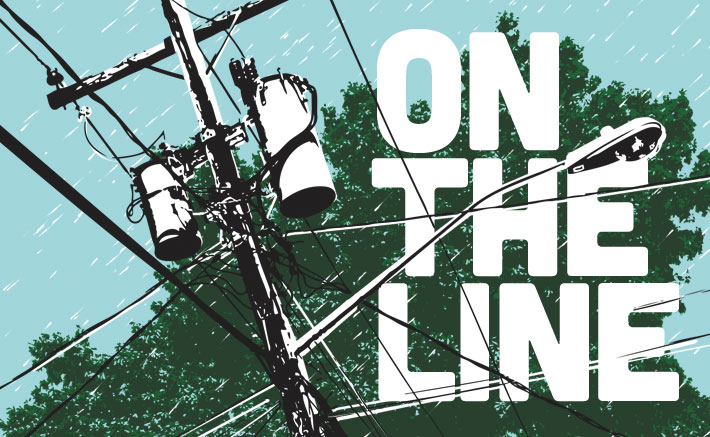
Will LIPA and National Grid do better the next time a hurricane hits Long Island?
Gordian Raacke’s modern two-story white stucco house nestled among the pines in East Hampton pales in comparison to the gaudy mansions of the South Fork but it is a force to be reckoned with.
“Right now we’re a power plant generating power for the neighborhood and the rest of Long Island!” he remarks, pointing to the solar panels on the roof of his car port, where he also keeps a red kayak and stacks of firewood. At the end of the driveway the Long Island Power Authority’s meter shows how many kilowatts are flowing from his property on this sunny, very hot July day.
“We’re on the grid and we want to be on the grid because that solar array makes much more energy than we can use,” Raacke explains.
LIPA gives him about a $20 credit at the end of the year. They used to cut him a check, but he doesn’t mind.
As the executive director of Renewable Energy Long Island, Raacke’s an advocate for renewable energy—think solar and wind—and for using energy more efficiently. He and his wife, Gabriele Raacke, an artist who shows in the Hamptons and Manhattan, built their house themselves in 1993, using the best technology available at the time. The insulation between the walls and under the roof is made of Styrofoam, and it’s so airtight it’s “like having a good down coat over your entire house,” he says.
Although his own energy costs are near zero, Raacke’s home is no different from any household connected to the LIPA grid, so when Tropical Storm Irene rolled over Long Island last August, he lost power just like 523,000 other customers. But unlike the majority, he’s actively committed to fighting climate change by trying to reduce America’s dependence on fossil fuels, one electric bill at a time.
As the former executive director of the Citizens Advisory Panel—the oversight committee set up following the shuttering of the never-powered Shoreham Nuclear Power Plant and its Tax Settlement Agreement, which saddled LI ratepayers with several billion dollars in debt due to the failed project—he doesn’t see LIPA as an adversary but an ally in the transition that he firmly believes must be made as soon as possible.
Concerning local environmentalists, energy advocates and politicians are revelations questioning LIPA’s ability to meet the Island’s growing energy demands as well as resolve criticisms regarding its current management structure, power contracts and emergency response—many of which were detailed in recently released audits commissioned by New York State and Suffolk County.
In the immediate days ahead, Raacke, like every Long Islander, can only hope that during this hurricane season—which lasts until Nov. 30—LIPA and National Grid, the British-based contractor that runs the transmission system and the gas power generation here, won’t repeat last year’s mistakes, which left thousands of customers in the dark for up to nine days, drawing heat from Gov. Andrew Cuomo, who told National Grid after Irene hit on Aug. 28 to “get the power on now!”







